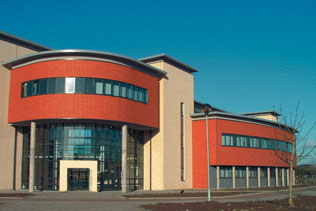| 2003 |

|
YEAR BOOK |
National University of Ireland, Maynooth
|
Faculty of Engineering
|

Mixed Signal Systems Group
In the future, there will be an increasing number of portable devices which combine audio and video bi-directional functionality. This trend is driving the integration of these many disparate functions onto a small number of multi-function chips. The Mixed Signal Systems group is concentrating on the technologies needed for these future generations of wireless devices, with an emphasis on prototyping and evaluating proposed techniques.
In particular, the group is currently investigating new architectures for ultra-high frequency phase-lock-loops for generating signals at frequencies in excess of 10 GHz. Phase-lock-loops are essential for all wireless communications, yet are becoming increasingly difficult to design as the required frequencies rise. We are investigating whether a new approach through the application of enhanced digital control of the analogue components, and by the application of techniques from control theory, we can develop tools to enable rapid designs of these systems into the future.
Digital Signal Processing Research Group
Time-scale modification (TSM) of speech involves slowing down recorded speech playback without altering the inherent pitch or intonation. Applications of such work include foreign language learning, speech therapy, audio-typing, voice-mail speed-up/slow-down etc. A high quality and efficient speech TSM algorithm has been developed within the DSP Research Group and incorporated into a foreign language learning prototype application. This first stage prototype is currently undergoing a beta test with the help of the language centre in NUI Maynooth. It is hoped to further refine this prototype and commercialise it through a campus company.
This same technology is also being incorporated into existing speech recognition systems with a view to making such systems more speaker independent and robust. It has also recently been incorporated into the GSM mobile phone speech compression standard and shown to enable improved compression ratios.
For further information: Contact: Dr. Bob Lawlor, Department of Electronic Engineering, NUI Maynooth, Co. Kildare;
Email: [email protected] Web: www.eeng.may.ie